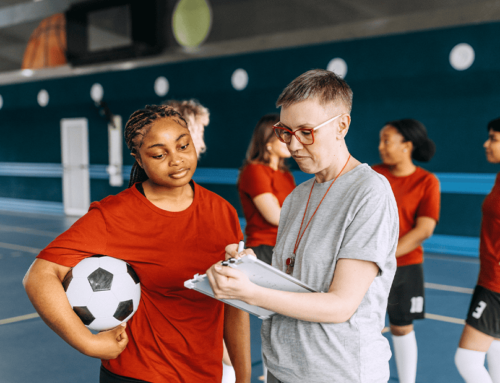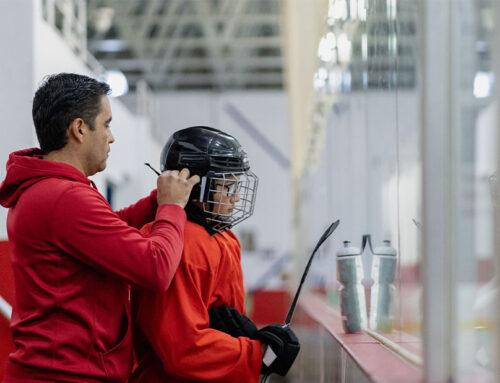Strength Training for Endurance Athletes

When endurance athletes enter a strength training program, it is essential that they regard their training plan as another endurance event. To most people, strength training for endurance athletes implies high reps and high volume, but in reality, it can be done many different ways.
When training endurance athletes, one option is to increase their cardiac output and VO² max [i.e., the volume of oxygen they can consume while exercising at their maximum capacity]. It’s also important to train oxidative capacity [i.e., the amount of oxygen a muscle can use during an aerobic workout] and the contractile capacity of muscles involved in executing the movements.
Training for endurance athletes involves strength work as well as corrective exercises, particularly for the shoulders, back and core. By building these muscle groups, body alignment and posture can be improved and maintained—important for a long event. Since endurance athletes compete for prolonged periods of time, their training must deliver benefits from the beginning of an event to the end.
I have seen the benefits of strength training firsthand by working with collegiate cross country runners. During a busy season of races, these endurance athletes are able to lift only twice a week, so their training involves full body workouts on each of those days. The team begins with plyos and progresses through powerful lifts, always finishing with core and hip work.
Below are a few lower body strength exercises that can be used. Single-leg strength and stability are critical, so focus on exercises that train them. Use the following exercises to develop muscular endurance:
Barbell Half-Squat Jumps: Vertical jumps from a semi-squat position with barbell on shoulders
Scissor Lunge Jumps: Vertical jumps from a split stance, alternating while in the air
Box Jumps
Weighted Squat Jumps
Resistance Exercises: With a weight plate on the quad, drive the knee up from a standing position, or perform ground-based hip raises
Ben Fleming is an assistant strength and conditioning coach for the University of Central Florida. In addition to assisting with the Knights’ football program, he oversees strength programs for numerous other sports, including track & field, softball, and men’s and women’s tennis. Fleming is a certified strength and conditioning coach, and he holds a Level 1 coaching certification from USA Weightlifting. He is also certified by Pat Etcheberry, one of the top tennis and golf strength and conditioning coaches in the world. Fleming earned his bachelor’s degree in parks and recreation administration from Wingate University, where he was also a member of the soccer team. In 2009, he earned a master of arts in health/wellness and applied exercise physiology from UCF.
RECOMMENDED FOR YOU
MOST POPULAR
Strength Training for Endurance Athletes

When endurance athletes enter a strength training program, it is essential that they regard their training plan as another endurance event. To most people, strength training for endurance athletes implies high reps and high volume, but in reality, it can be done many different ways.
When training endurance athletes, one option is to increase their cardiac output and VO² max [i.e., the volume of oxygen they can consume while exercising at their maximum capacity]. It’s also important to train oxidative capacity [i.e., the amount of oxygen a muscle can use during an aerobic workout] and the contractile capacity of muscles involved in executing the movements.
Training for endurance athletes involves strength work as well as corrective exercises, particularly for the shoulders, back and core. By building these muscle groups, body alignment and posture can be improved and maintained—important for a long event. Since endurance athletes compete for prolonged periods of time, their training must deliver benefits from the beginning of an event to the end.
I have seen the benefits of strength training firsthand by working with collegiate cross country runners. During a busy season of races, these endurance athletes are able to lift only twice a week, so their training involves full body workouts on each of those days. The team begins with plyos and progresses through powerful lifts, always finishing with core and hip work.
Below are a few lower body strength exercises that can be used. Single-leg strength and stability are critical, so focus on exercises that train them. Use the following exercises to develop muscular endurance:
Barbell Half-Squat Jumps: Vertical jumps from a semi-squat position with barbell on shoulders
Scissor Lunge Jumps: Vertical jumps from a split stance, alternating while in the air
Box Jumps
Weighted Squat Jumps
Resistance Exercises: With a weight plate on the quad, drive the knee up from a standing position, or perform ground-based hip raises
Ben Fleming is an assistant strength and conditioning coach for the University of Central Florida. In addition to assisting with the Knights’ football program, he oversees strength programs for numerous other sports, including track & field, softball, and men’s and women’s tennis. Fleming is a certified strength and conditioning coach, and he holds a Level 1 coaching certification from USA Weightlifting. He is also certified by Pat Etcheberry, one of the top tennis and golf strength and conditioning coaches in the world. Fleming earned his bachelor’s degree in parks and recreation administration from Wingate University, where he was also a member of the soccer team. In 2009, he earned a master of arts in health/wellness and applied exercise physiology from UCF.










